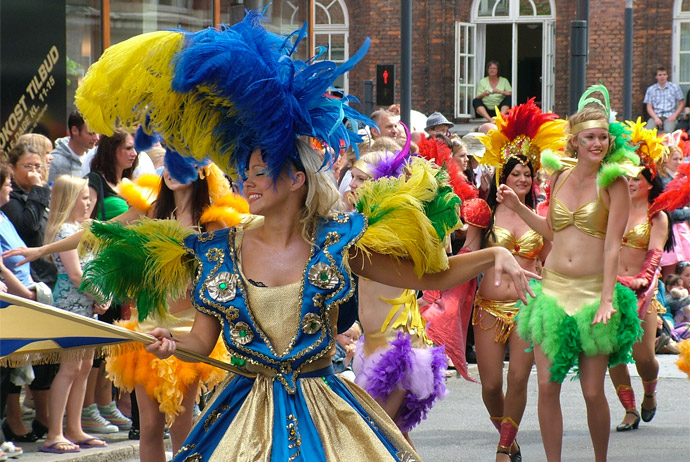Carnival - Norway - Fastelavn
Fastelavn is a Carnival tradition in the Northern European, and historically Lutheran, nations of Denmark, Norway, Sweden, Iceland and the Faroe Islands. The related word Fastelovend [ksh] is used for Carnival in Germany in Köln and Bonn with the same meaning. It is celebrated on either the Sunday or Monday before Ash Wednesday. Fastelavn is related to Roman Catholic tradition of Carnival in the days before Lent, but after Denmark became a Protestant nation, the festival adopted certain distinctives. The holiday occurs the week before the Christian penitential season of Lent, culminating on Shrove Tuesday, the day before Ash Wednesday, the first day of Lent. The Swedish counterpart is Fettisdagen, the Icelandic is Öskudagur, and in Finland they celebrate Laskiainen. In Iceland, Ísafjörður is the only town that celebrates Fastelavn on the same day as the other Nordic countries. The day is known as Maskadagur (mask-day).
The traditions of Fastelavn varies somewhat between the countries, and local regions even, and have also changed a bit over time, while some traditions have remained the same. For Fastelavn nowadays, a common theme in all the countries involves children dressing up in costumes, walking door to door while they sing and gather treats for the Fastelavn feast, a form of trick-or-treat. Today, the festivities of Fastelavn are generally considered to be a time for children's fun and family games.
As in Carnival traditions elsewhere, dressing up in costumes forms an important part of Fastelavn in all the Nordic Lutheran countries where this festivity is celebrated. In some places this involves smaller processions, but in contrast to former times, dressing up in costumes are now mainly a children's activity only.
In Norway, students having seen celebrations in Paris introduced Carnival processions, masked balls and Carnival balls to Christiana in the 1840s and 1850s. From 1863, the artist federation kunstnerforeningen held annual Carnival balls in the old freemasons lodge, which inspired Johan Svendsen's compositions "Norsk Kunstnerkarneval" and "Karneval in Paris". The following year, Svendsens Festpolonaise was written for the opening procession of the Carnival ball. Edvard Grieg also attended the Carnival, and wrote "aus dem Karneval" (folkelivsbilleder Op. 19). After the Rococo Hall at Grand Hotel opened in 1894, annual balls in the Carnival season were arranged until the hall was destroyed in a fire in 1957. Since 1988, the student organization Tårnseilerne have produced annual masquerade balls in Oslo in the historical renovated freemasons lodge in the Carnival tradition, with masks, costumes and processions after attending an opera performance. The Carnival season also includes Fastelavens søndag (with cream buns) and fastelavensris with decorated branches.



Comments
Post a Comment